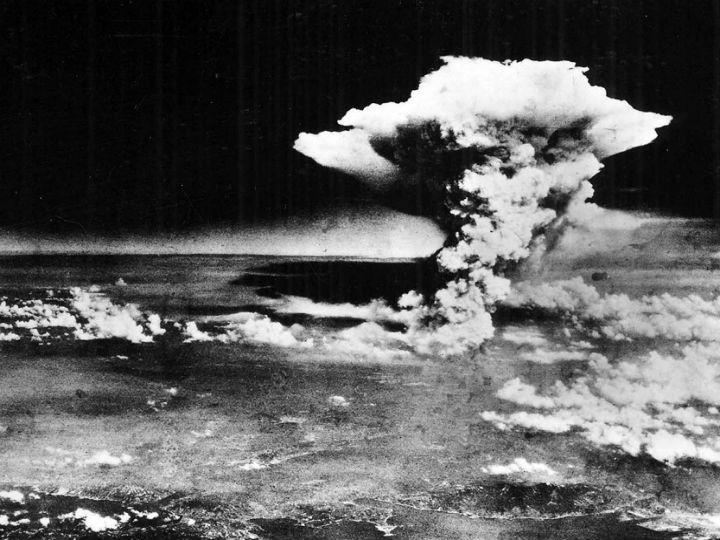by Colin Cleary*
As we mark the 75th anniversary of Hiroshima and Nagasaki, we should remind ourselves that the most dangerous legacy of the Cold War remains stubbornly in effect — the launch on warning posture of U.S. and Russian land-based Intercontinental Ballistic Missiles (ICBMs).
It is long past time to put in place what many prominent U.S. officials and strategists have long been advocating — a “No First Use” nuclear posture and removal of U.S. ICBMs from hair-trigger alert.
Reducing the role of nuclear weapons
Ronald Reagan, the 40th U.S. President, famously pledged decades ago that “a nuclear war cannot be won and must never be fought.”
The world-ending destructive power of nuclear weapons means that their only purpose must be to deter their use by others until such time as a system for their global elimination can be established.
In that same vein, the 2020 Democratic Party draft platform declares deterrence to be “the sole purpose of our nuclear arsenal.”
That could very well point to progress ahead. A “No First Use” declaration by a new U.S. administration, followed by the de-alerting of our land-based ICBMs, would make clear that the United States is serious about reducing the role of nuclear weapons.
Better yet, it would also serve as a much-needed and, in this case, game-changing demonstration of the power of principled U.S. leadership.
The great danger: Accidental nuclear war
As former U.S. Defense Secretary William Perry and Ploughshares Fund Policy Director Tom Collina have highlighted in their new book “The Button,” U.S. strategic nuclear forces remain focused on the wrong threat: A bolt-out-of-the blue first strike on the United States by Russia.
Perry and Collina recount how the early warning systems of both sides have registered harrowing failures over the years, at various times nearing the brink.
Such systems will inevitably fail again, not least in the era of cyber-threats. It is thus imperative to structure our nuclear posture to guard against the greatest danger: Accidental nuclear war.
Legacies of a bygone era
The United States and Russia still maintain 90% of the world’s nuclear weapons, about 6,000 warheads each. The 2018 U.S. Nuclear Posture Review (NPR) reaffirms a commitment to the option of “prompt use” of our land-based ICBMs after a “deliberative process.”
What that means in practice is that in the event of a warning of an attack, a U.S. President would have less time than it takes to order a pizza to decide whether to launch hundreds of land-based ICBMs or risk their destruction on the ground.
Madness and information management
At present, the decision to annihilate civilization could still be made in minutes with imperfect information by a single, possibly deeply flawed, individual entering codes into a nuclear football.
The same applies on the Russian side. It should be of little comfort to Americans to know that their lives are at the mercy of the accurate functioning of the Russian nuclear missile early warning alert system.
Confidence building badly needed
For that reason, the more we can instill confidence in the Russian system that the United States will not launch a first strike, the better.
Better why? Because it makes it less likely that the Russian leadership would interpret erroneous warnings or non-nuclear missile launches as a U.S. attack, requiring them to launch their ICBMs or risk losing them.
We should welcome verification to make the ending of the hair-trigger posture as credible as possible. Eventually, as former U.S. Defense Secretary Perry advocates, the United States should eliminate all of its land-based ICBMs. Preferably, this would be done in concert with Russia, but it could be done unilaterally.
Unlike invulnerable U.S. submarine based nuclear weapons and our bomber fleet, land-based ICBMs actually diminish U.S. security by serving as a fixed target that is regarded as a first strike weapon by our adversaries.
Arms control
“No First Use” could revive arms control with Russia and prompt corresponding changes in the Russian posture away from its own launch on warning and First Use policies.
This would be done in conjunction with the extension of the New Start Treaty, which expires in February 2021. A “No First Use” policy would also help fulfill U.S. obligations under the Nuclear Non-Proliferation Treaty, which marks its 50th year in force in 2020.
No tactical first use
Possible first use of U.S. nuclear weapons in Europe was envisioned during the Cold War when NATO was at a conventional force disadvantage. That is no longer the case.
Russia’s current contemplation of the first use of tactical nuclear weapons in Europe, at least according to its military doctrine, is based on a similar scenario of their impending defeat in a conventional conflict. It may thus be as much a sign of weakness as strength.
Similarly, as Perry and Collina demonstrate, the United States has ample conventional force options to eliminate the need, as envisioned in the 2018 NPR, to be prepared to use nuclear weapons against non-nuclear threats.
The United States should likewise maintain sufficient conventional forces in South Korea and Japan to demonstrate U.S. commitment to their defense without the need to threaten a first strike.
Existential threats
Climate change and nuclear war are the two main existential threats facing the United States.
Of the two, the threat of accidental all-out nuclear war is both far more deadly — and yet more amenable to solution.
Through policy changes that can be put in place on day one of a new U.S. administration — declaring “No First Use” and taking our land based ICBMs off hair-trigger — the United States can break the spell of the usability of nuclear weapons that still pervades its doctrine.
Avoiding “The Day After”
The last time the threat of full-scale nuclear war was foremost in the American consciousness was during the U.S.-Soviet tensions of the early 1980s.
An estimated one million people gathered in New York’s Central Park in June 1982 to protest the nuclear arms race. About a hundred million viewers watched “The Day After” — a 1983 TV movie (still worth seeing and available for free on YouTube) that brought the issue home.
Fulfilling Obama’s Prague vision
Today, nuclear disarmament gets far less attention than it deserves, including during the current U.S. Presidential campaign.
Many Americans are woefully unaware that a faulty computer chip, a cyber hack or human blunder could set the wheels in motion that could eradicate our civilization in a flash.
It is long past time to move away from our destabilizing Dr. Strangelove-era hair-trigger nuclear posture and toward the goals laid out by President Obama in his 2009 Prague speech.
Therefore, it is wise policy for a new Biden administration to reduce the role of nuclear weapons in our strategy and, ultimately, forge a world without them.
*retired Foreign Service Officer with the U.S. Department of State
**first published in: www.theglobalist.com




 By: N. Peter Kramer
By: N. Peter Kramer
